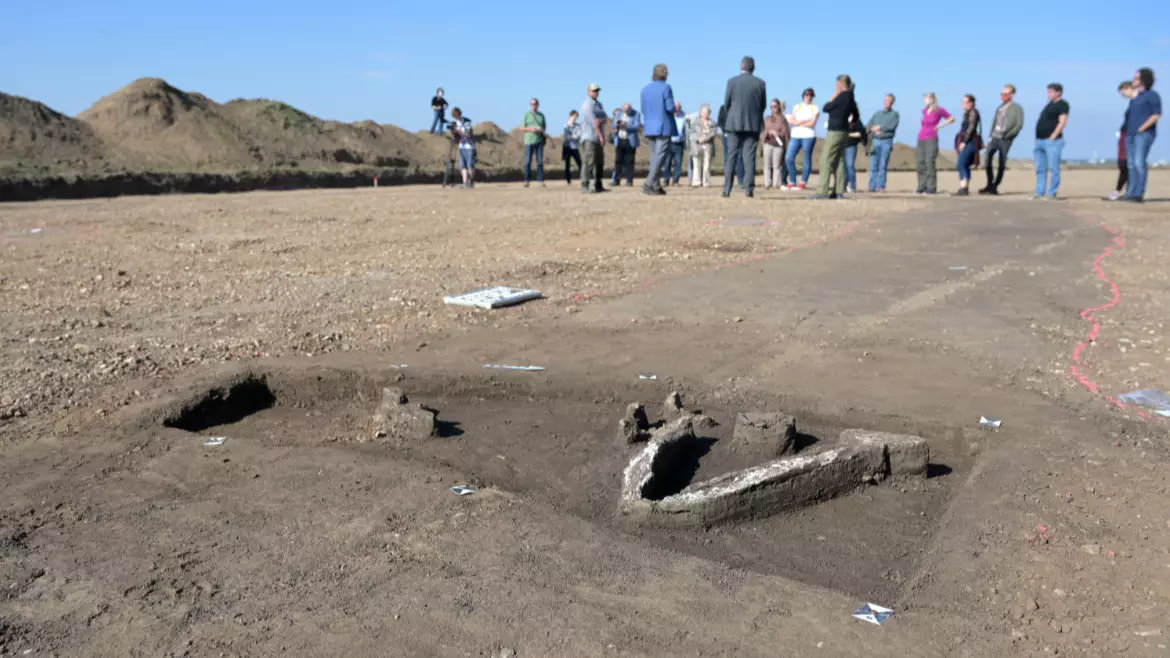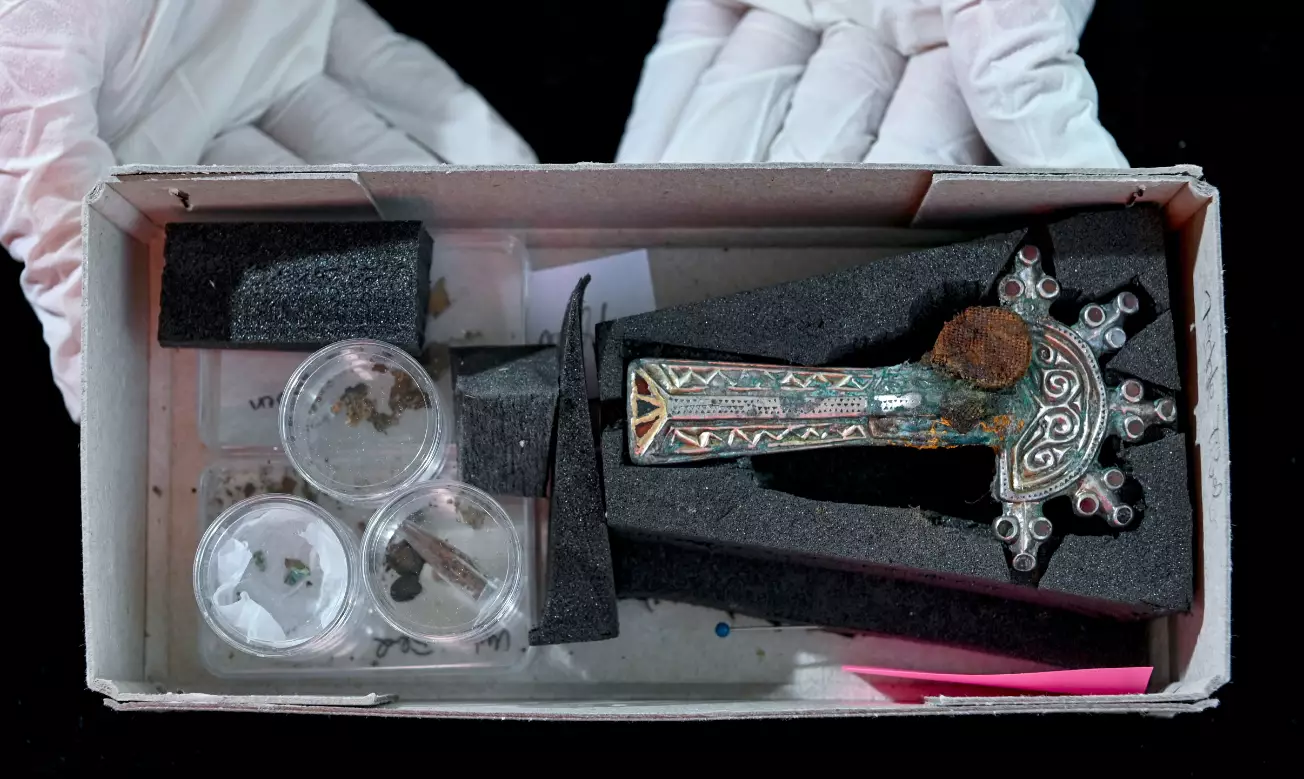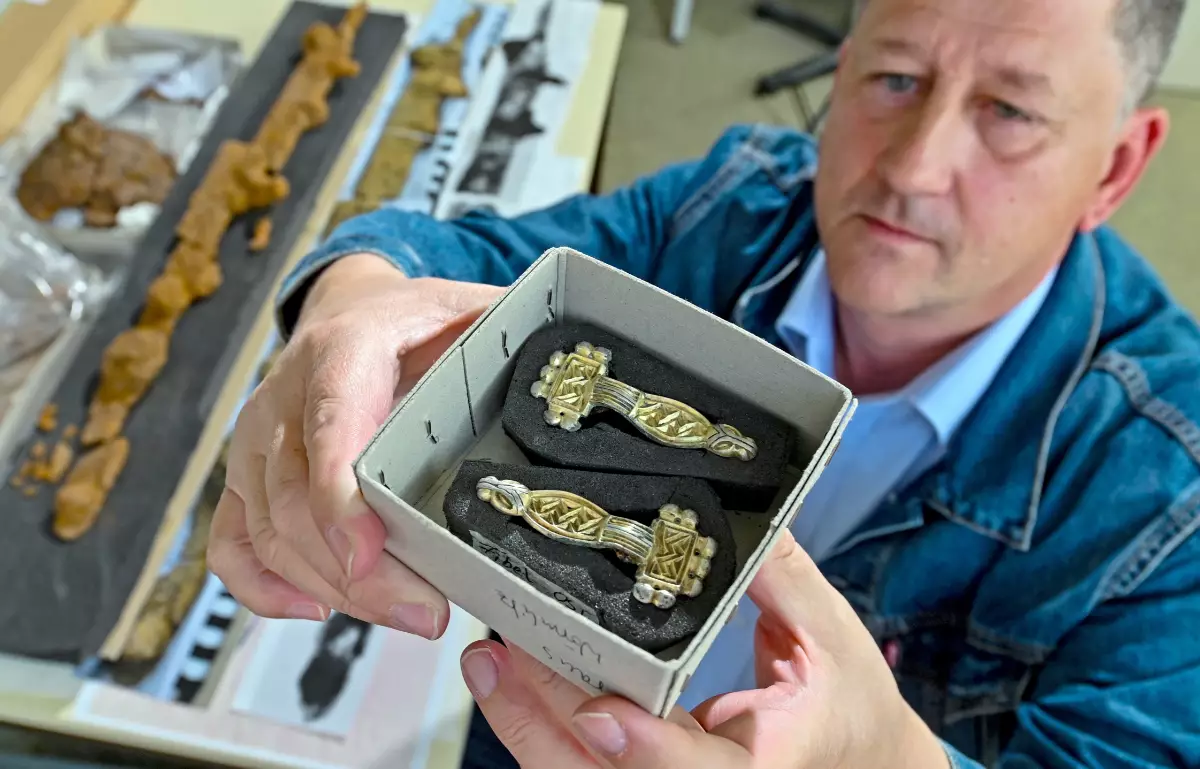
The remains of an ancient Germanic lord or prince have been discovered in Saxony-Anhalt, with archaeologists unearthing a bronze cauldron surrounded by the bodies of six women.
The person, who is believed to have been of high-ranking status, lived 1,500 years ago during the Great Migration.
Builders stumbled across the site as they were clearing land for a new chicken farm, prompting excavations to get underway to reveal the cemeteryof a royal court.
Advert
The elaborate burial complex, near Brücken-Hackpfüffel in Germany, has been hailed the most important find in the last 40 years of Germany's history.
While experts don't know much about the person buried there - or the six unknown women - the design and contents of the burial site suggest they were of high status.

The tomb also holds the remains of various animals, including cattle, dogs and 11 horses, along with valuable gold and silver items.
Advert
According to The Times, a bronze cauldron sits at its centre, circled by the graves of six female bodies, who were buried in a radial alignment from the pot, much like the hands of a clock.
Researchers believe the women may have been concubines or widows of the person, but it is not known whether they may have been killed for the burial or even sacrificed themselves.

The tomb is also surrounded by 40 to 60 other graves, suggesting the person must have been extremely important.
Advert
Archaeologist Arnold Muhl said: "The cemetery has almost 60 graves.
"In the graves, among other things, a glass decorated bowl, a spindle whorl made of glass, several silver-gilded robe clips, a sword and a shield boss made of iron as well as a gold coin of the Eastern Roman emperor Zeno around 480 were found.
"The pieces of glass come from the Gallo-Roman workshops along the Rhine, only they mastered this technique."

Many mysteries remain about the complex, including who it was for.
Advert
Archaeologist Susanne Friederich, from the Landesmuseum Halle, said: "We haven't found the prince himself yet. But maybe his ashes are in the bronze cauldron."
The animals had also been reburied at the site, further indictating that it was to honour a high-ranking figure in society.
Friedrich said: "The unique finds suggest that high-ranking personalities were buried here."
Featured Image Credit: PATopics: World News, News, Germany